Consensus upgrade voting with Decrediton
In other blockchain projects, consensus upgrade proposals are conducted through polls, forums or on-chain flagging mechanisms. In Decred’s case, the coin holder is the only participate that gets to decide whether the upgrade will go ahead or not.
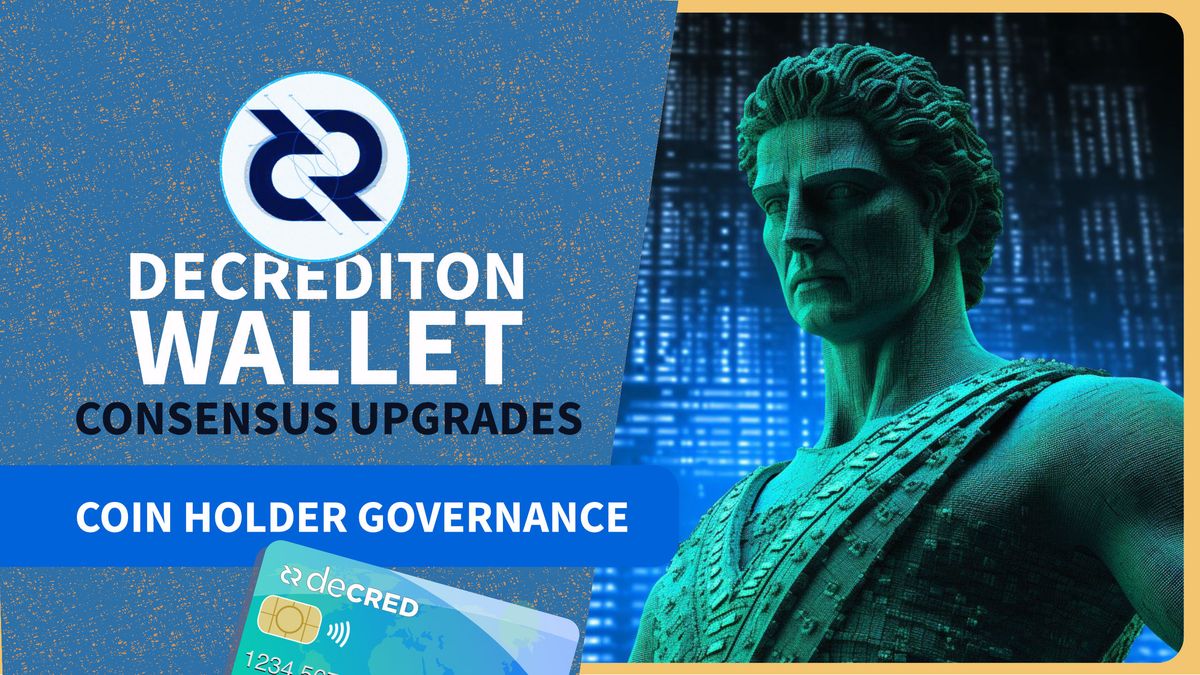
Steps for Decred consensus upgrades:
Propose – Discuss – Build – Dormant Upgrade – Vote – Deploy or Discard
A consensus vote on the Decred blockchain goes through a sequence of steps. In this video, we’ll give a basic overview of this process and show you how to place your vote in Decrediton.
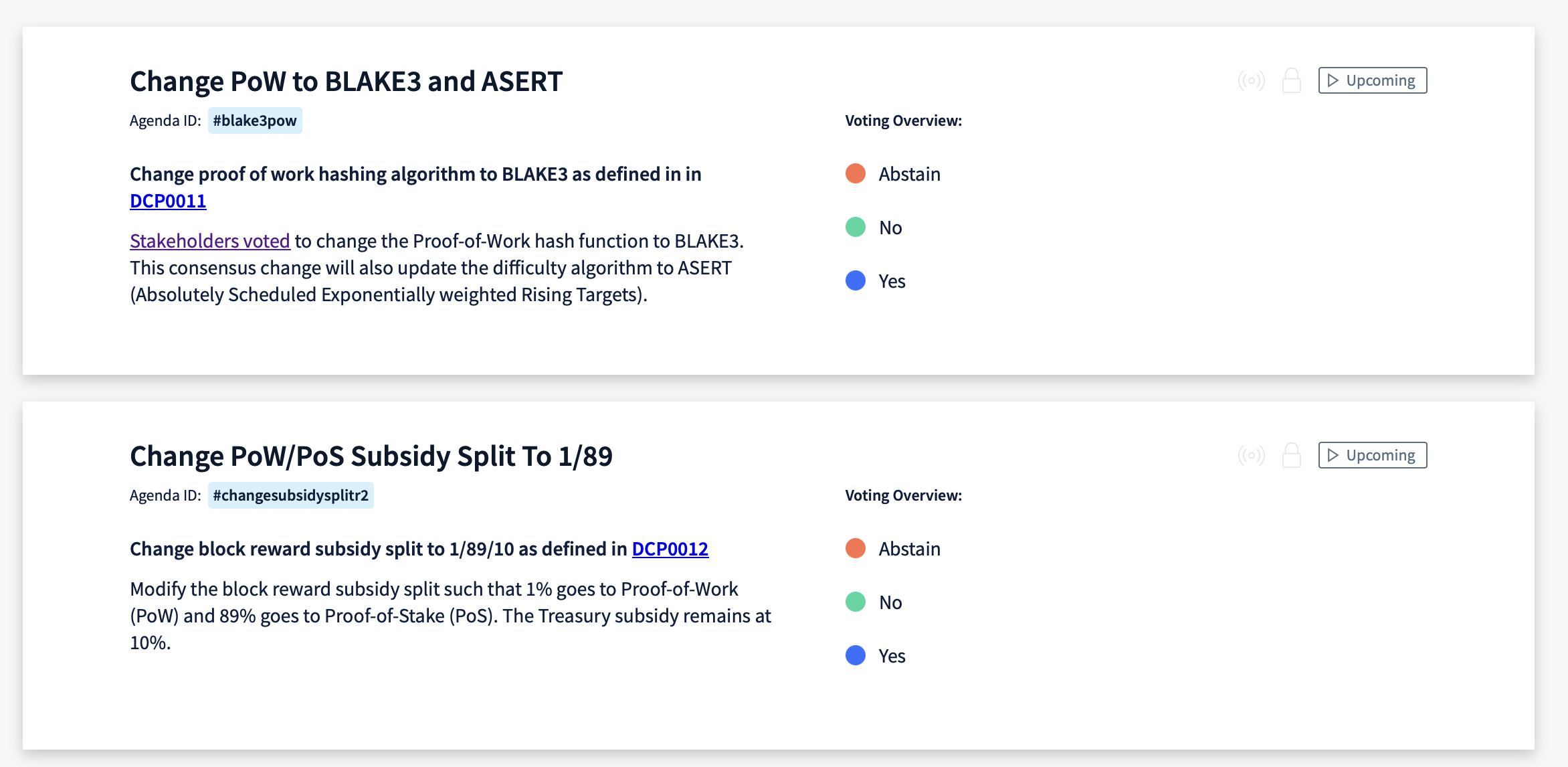
Before a consensus upgrade can start, it's best to evaluate whether the community wants the upgrade to the rules or not. This is done by the development team producing a Decred Change Proposal (DCP). This proposal can also be submitted through Politeia, which gives a transparent view of coin holder preference and also gives the proposal the added benefit of seeing if the community is happy to pay for the work to be completed.
In most other blockchain projects, this part of the process would be conducted through polls, forums or on-chain flagging mechanisms. In Decred’s case, the coin holder is the only participate that gets to decide whether the upgrade will go ahead or not.
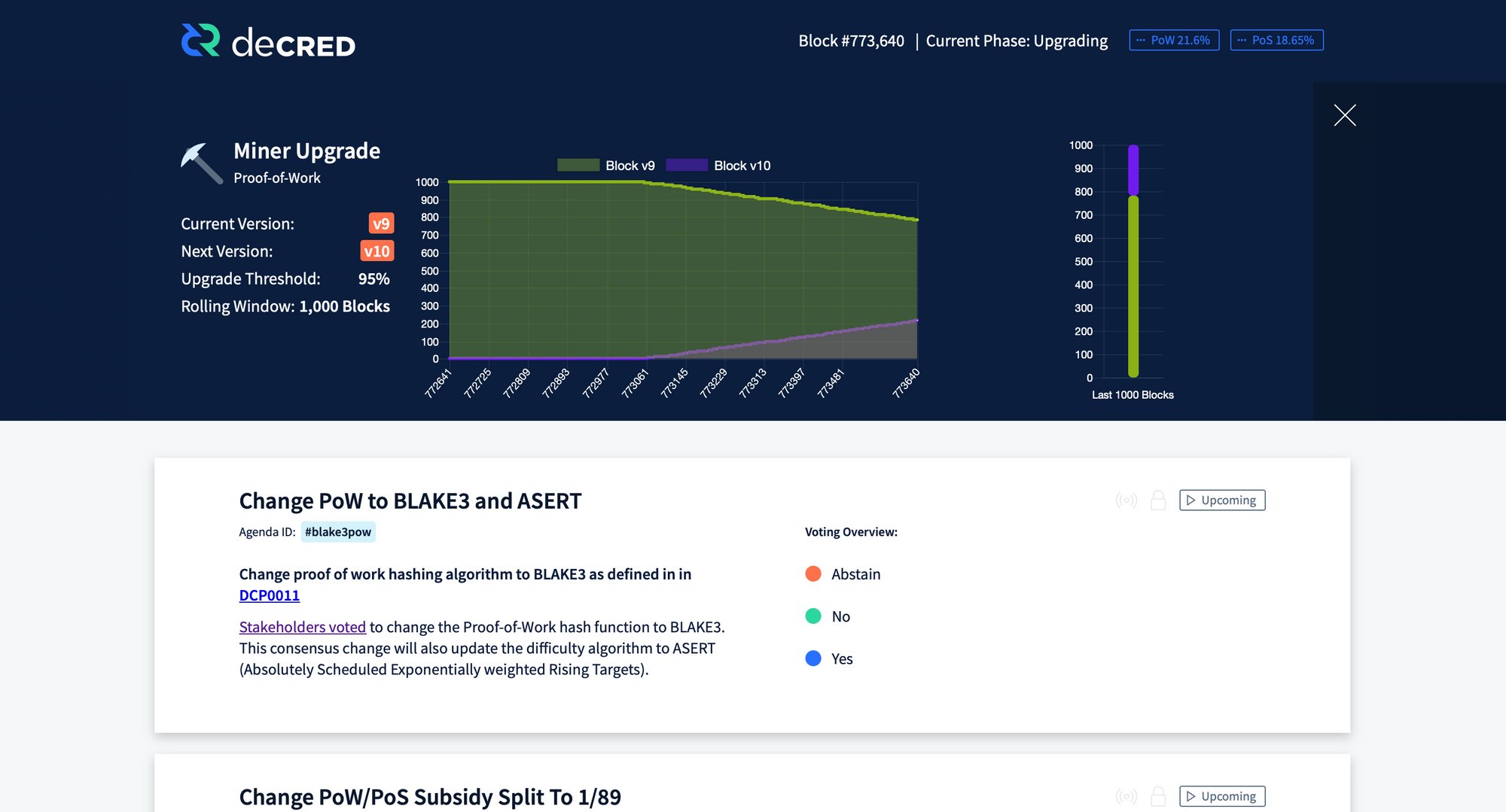
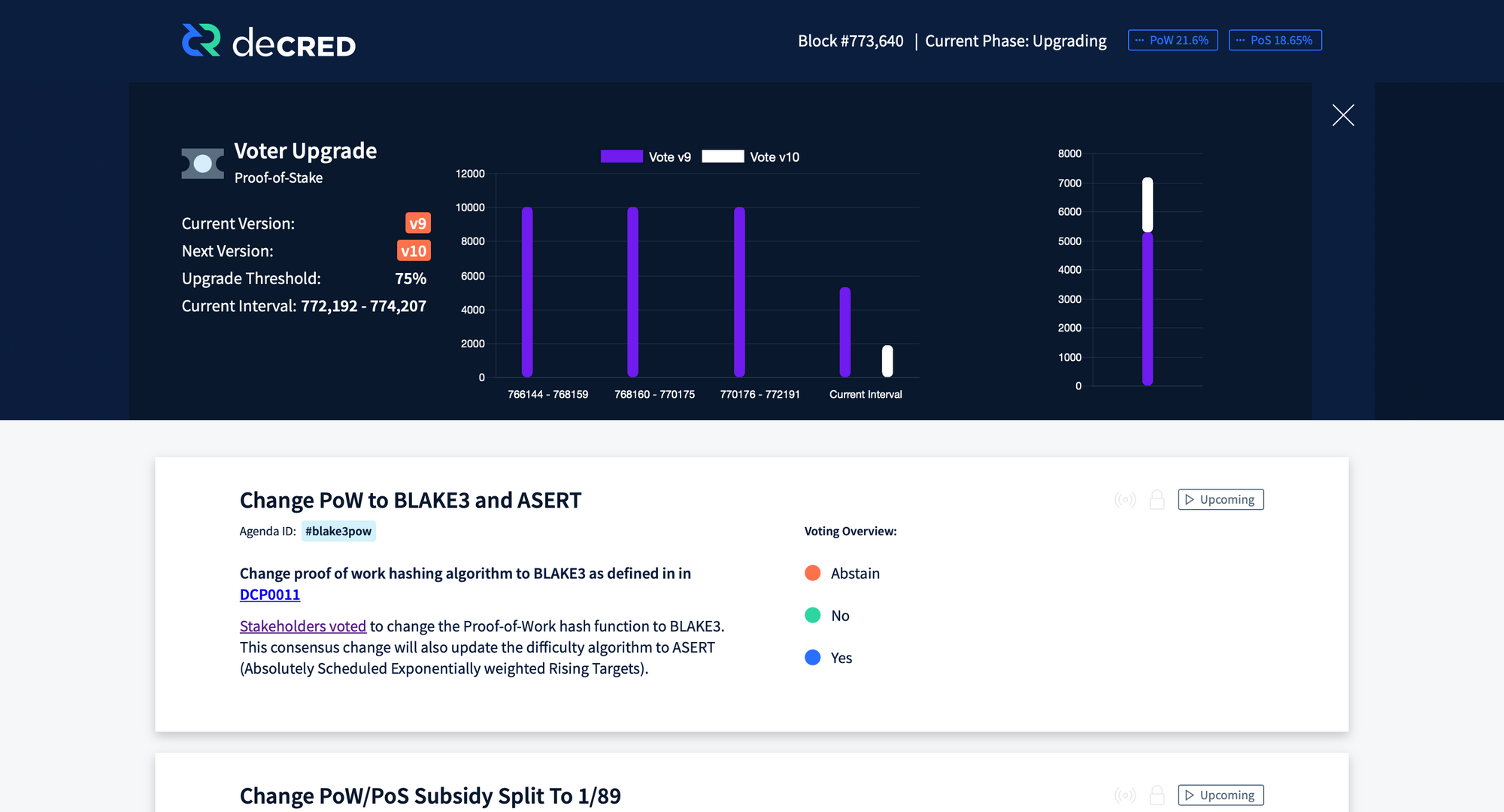
The DCP describes the rule change in detail, the work needed to be done and the time frame. If submitted through Politeia, this proposal is then discussed for approximately 7 to 14 days. Once this period ends, the proposal goes up for voting, which lasts approximately 7 days. In order for a proposal to be successful, at least 20% of the vote pool must vote either yes or no, and at least 60% of these votes must be yes.
If the proposal is successful, the upgrade will get built and undergo a series of checks. Once the new consensus code passes these checks, it’s then released as a new software version for all participants to install, including for Decrediton users.
This then begins the consensus voting process. In this first stage, everyone upgrades their software during a single Rule Change Interval (which is 8064 Blocks, approx 1 month). The new consensus code is not active, instead it’s installed in a dormant state and will remain that way unless the final vote is successful.
In order for the vote to begin, two things need to happen. First, at least 95% of the last 1000 blocks mined need to have been with the latest block version. And secondly, at least 75% of the votes cast in a single Stake Version Interval (which is 2016 blocks or approx 1 week) have to be with the latest vote version.
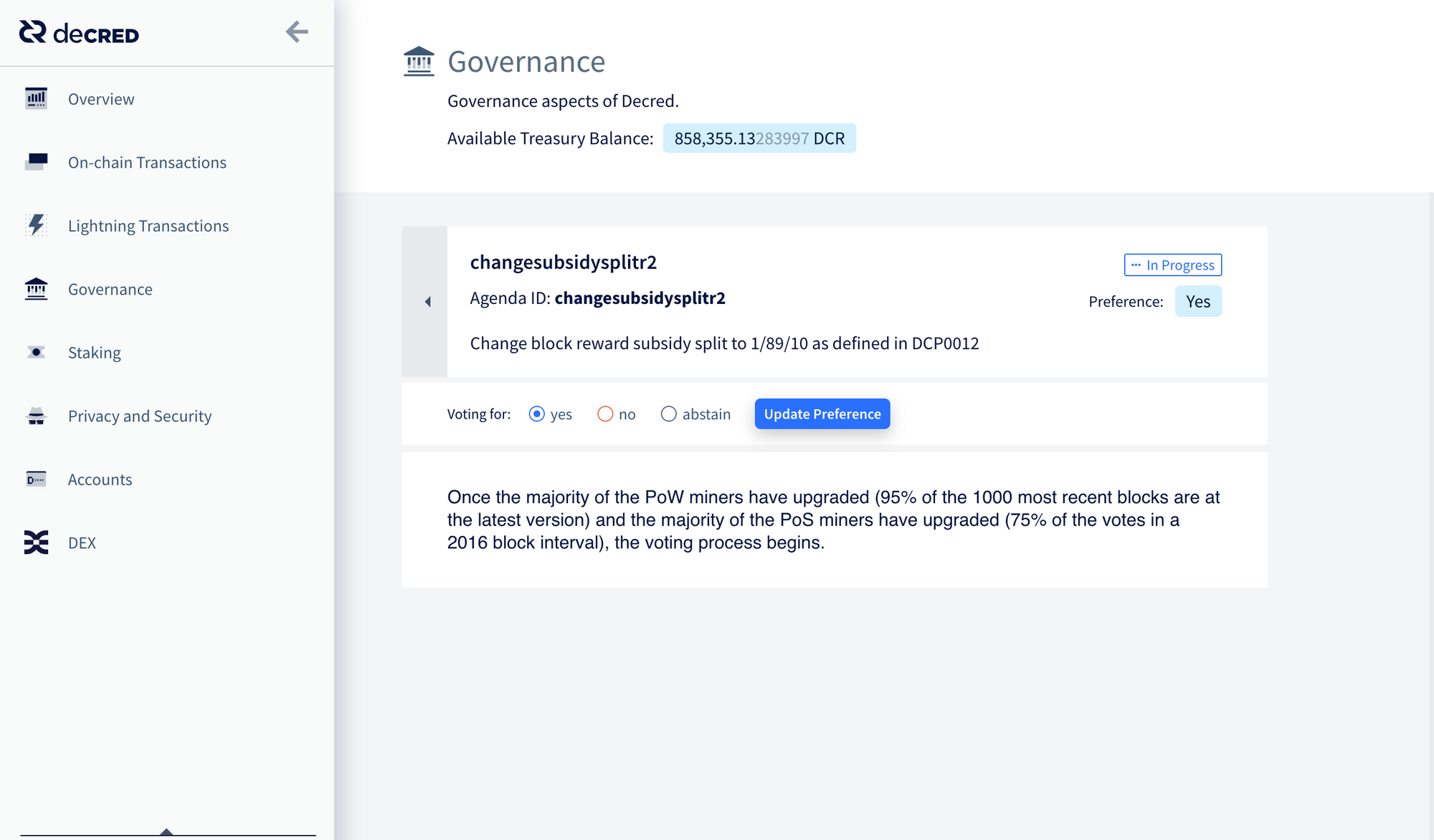
During this stage, users need to upgrade their Decrediton software (in this case, version 1.8). Then head over to the governance tab and cast their vote. Once the vote starts and the ticket is called, the option selected will be added to the vote tally. The consensus voting period takes the full duration of a rule change interval (which is 8064 Blocks, approx 1 month).
A consensus upgrade will be successful if at least 10% of all votes cast are non-abstaining (that’s, 4032 yes or no votes) and at least 75% of these non-abstaining votes are cast as yes votes.
If the 10% quorum requirement is met, and more than 75% of the votes are in favour of activating the new consensus rules, then a “lock-in” period begins. This is a fixed period of 8,064 blocks (approx 4 weeks). During this period, all participants in the Decred network must upgrade their software to the latest version. All full nodes participating in the network will automatically activate the new rules on the first block after this period, so any nodes still running the old software will no longer be able to participate.
Although, technically, this process is a lot more detailed than explained here. The information provided is everything you need to know to get your Decrediton wallet participating in a consensus upgrade on the Decred network.


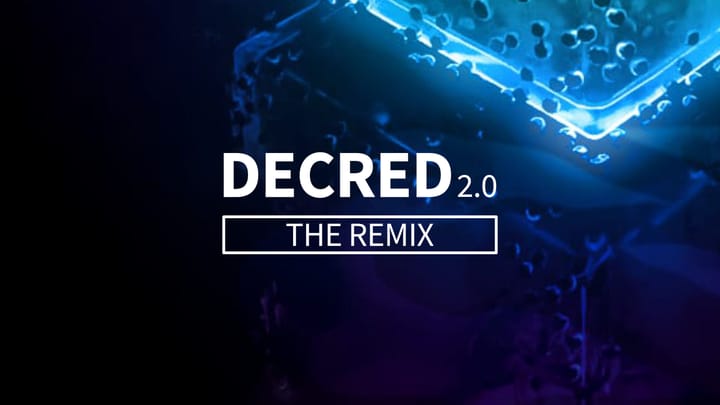
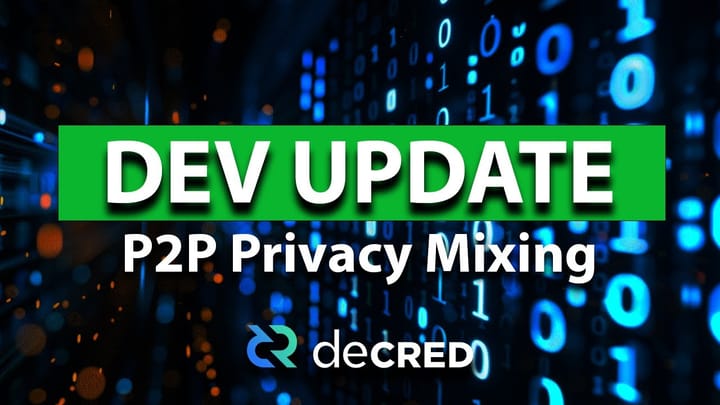

Comments ()